Volvo V60 VS Volvo S60 – Specs, Efficiency & Price Comparison
Which model is the better choice – the Volvo V60 or the Volvo S60? We compare performance (455 HP vs 455 HP), boot capacity (519 L vs 427 L), efficiency (0.70 L vs 0.70 L), and of course, the price (41600 £ vs 42500 £).
Find out now which car fits your needs better!
The Volvo V60 (Estate) is powered by a Petrol MHEV or Plugin Hybrid engine and comes with a Automatic transmission. In comparison, the Volvo S60 (Sedan) features a Petrol MHEV or Plugin Hybrid engine and a Automatic gearbox.
When it comes to boot capacity, the Volvo V60 offers 519 L, while the Volvo S60 provides 427 L – depending on what matters most to you. If you’re looking for more power, you’ll need to decide whether the 455 HP of the Volvo V60 or the 455 HP of the Volvo S60 suits your needs better.
There are also differences in efficiency: 0.70 L vs 0.70 L. In terms of price, the Volvo V60 starts at 41600 £, while the Volvo S60 is available from 42500 £.
Compare all the key specs now and find out which model fits your lifestyle best!
In the battle between the Volvo S60 and the Volvo V60, each model showcases the brand's commitment to safety and performance, though they cater to different preferences. The S60, with its sleek sedan design, offers a sporty driving experience, while the V60’s versatile wagon shape provides ample cargo space and practicality for family-oriented buyers. Ultimately, choosing between the two comes down to whether you prioritize a dynamic sedan experience or the flexibility of a stylish estate.
Volvo V60
The Volvo V60 exudes a sense of refined elegance with its sleek design and smooth contours, making it a standout in the estate car category. Inside, it offers a harmonious blend of luxury and functionality with premium materials and state-of-the-art technology, ensuring a comfortable driving experience. Its performance on the road is impressive, combining efficient handling with a powerful yet quiet ride, making it a favourite for those who appreciate both style and substance.
details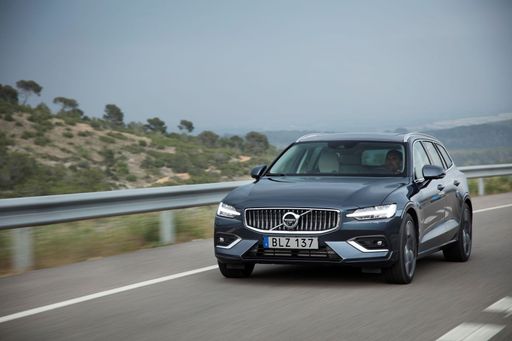 @ media.volvocars.com
@ media.volvocars.com
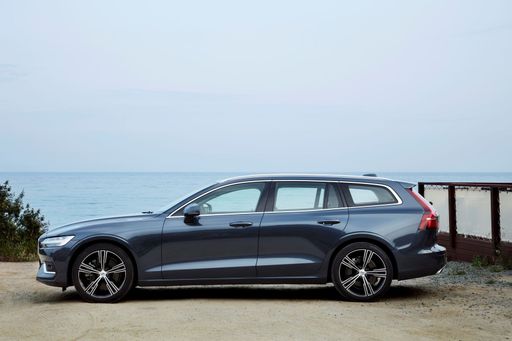 @ media.volvocars.com
@ media.volvocars.com
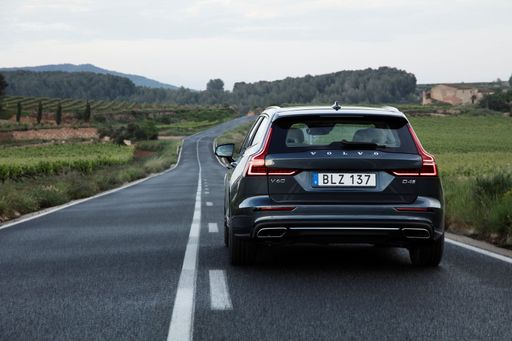 @ media.volvocars.com
@ media.volvocars.com
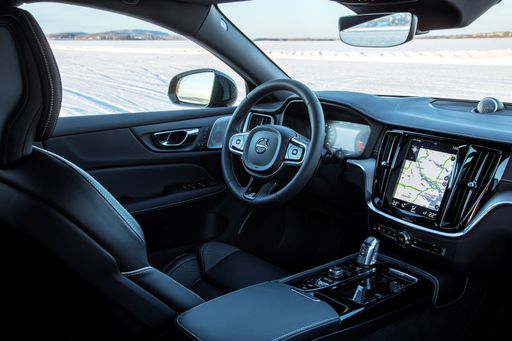 @ media.volvocars.com
@ media.volvocars.com
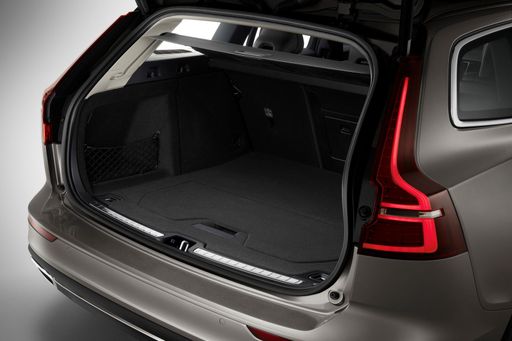 @ media.volvocars.com
@ media.volvocars.com
Volvo S60
The Volvo S60 combines sleek Scandinavian design with a focus on comfort and performance, offering a refined driving experience. Its interior is meticulously crafted, featuring high-quality materials and cutting-edge technology to enhance the journey for both driver and passengers. Safety remains a hallmark of the brand, with the S60 incorporating advanced systems designed to protect and assist on the road.
details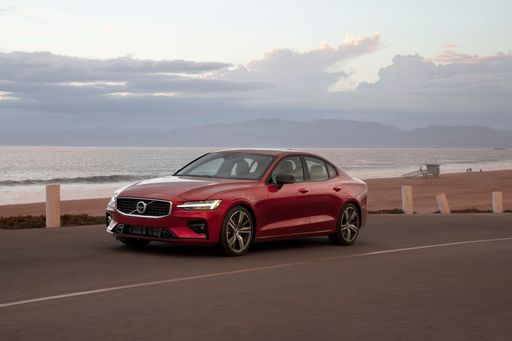 @ media.volvocars.com
@ media.volvocars.com
 @ media.volvocars.com
@ media.volvocars.com
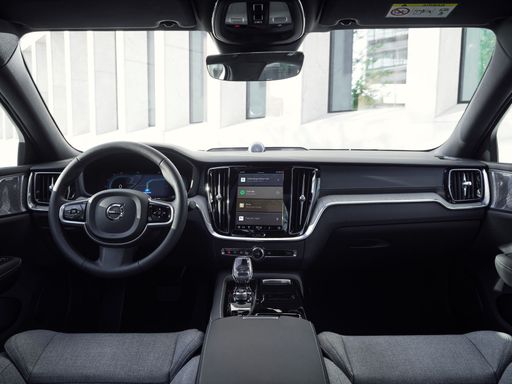 @ media.volvocars.com
@ media.volvocars.com
 @ media.volvocars.com
@ media.volvocars.com
The Volvo S60 and V60 are two remarkable offerings from the Swedish automaker, combining safety, performance, and Scandinavian design. Though both models share the same platform and many technical specifications, they cater to different lifestyles and preferences. In this article, we will delve into a comprehensive comparison of the S60 sedan and the V60 wagon, shedding light on their technical features, innovations, and practicality.
Design and Dimensions
At first glance, the differences in body type between the S60 and V60 are apparent. The S60 is a sleek sedan with a length of 4778 mm and a height of 1431 mm, while the V60 is a versatile wagon measuring 4787 mm in length and 1499 mm in height. Both models share a width of 1850 mm, striking a balance between style and functionality.
While the S60’s elegant silhouette appeals to those prioritizing aesthetics, the V60’s practicality shines through with its additional cargo space and rear hatch access. The V60 offers a trunk capacity of 519 liters compared to the S60's 427 liters, making it ideal for families or individuals requiring extra storage.
Engine Options and Performance
The powertrains of the S60 and V60 reflect a modern approach to performance and efficiency. Both models are available with an array of engine options including petrol mild-hybrid, plug-in hybrid, and the V60 also offers a diesel mild-hybrid. The S60 presents outputs ranging from 197 HP to a top figure of 455 HP, while the V60 mirrors this range but includes an additional 398 HP option.
Acceleration figures speak volumes about their performance capabilities. The S60 boasts an impressive 0-100 km/h time as fast as 4.6 seconds, while the V60 also achieves a remarkable time of 4.6 seconds for its top-tier variant. However, the S60 maintains slightly quicker acceleration with diverse powertrains.
Fuel Efficiency and Emissions
Both the S60 and V60 excel in terms of fuel efficiency, with consumption figures ranging from 5.9 to 7.4 L/100 km for the V60 and 6.1 to 7.1 L/100 km for the S60. The integration of hybrid technology in both models further enhances their eco-friendliness, with CO2 emissions ranging from 138 g/km in the S60 to up to 168 g/km in the V60.
Notably, both vehicles are equipped with a battery capacity of 14.7 kWh, allowing for an electric-only range of approximately 94 km for the S60 and 92 km for the V60. This innovation ensures that both Volvo models contribute to reduced emissions during everyday commutes.
Interior Features and Technology
The interior of both the S60 and V60 is a testament to Volvo's commitment to driver and passenger comfort. Offering space for five occupants, both models feature high-quality materials and an intuitive layout. The S60 is designed for a more focused driving experience, while the V60 emphasizes convenience and versatile space utilization.
Advanced technology in both vehicles includes Volvo's cutting-edge infotainment systems, driver assistance features, and high-quality sound systems. The user interface is modern and intuitive, ensuring that connectivity and entertainment are at the driver’s fingertips, regardless of which model is chosen.
Safety Innovations
Where both models truly shine is in safety. Volvo has a long-standing reputation for prioritizing safety, and the S60 and V60 are no exceptions. Equipped with the latest safety innovations, both vehicles include advanced driver assistance systems, adaptive cruise control, collision avoidance technology, and better structural integrity to protect occupants.
Volvo's dedication to safety continues with features like a semi-autonomous driving system, which enhances the driving experience while keeping occupants safe on the road.
Conclusion
In summary, the choice between the Volvo S60 and V60 ultimately comes down to personal preference and lifestyle needs. The S60 offers an elegant sedan profile suitable for individuals who favor style and performance, while the V60 presents a practical and spacious option for those who need added versatility without compromising on performance. Both vehicles exemplify Volvo's commitment to safety, efficiency, and innovation, making them standout choices in the competitive automotive landscape.

|

|
|
|
|
Costs and Consumption |
|
|---|---|
|
Price
41600 - 64200 £
|
Price
42500 - 65100 £
|
|
Consumption L/100km
0.7 - 6.2 L
|
Consumption L/100km
0.7 - 7.1 L
|
|
Consumption kWh/100km
-
|
Consumption kWh/100km
-
|
|
Electric Range
92 km
|
Electric Range
94 km
|
|
Battery Capacity
14.70 kWh
|
Battery Capacity
14.70 kWh
|
|
co2
17 - 140 g/km
|
co2
16 - 161 g/km
|
|
Fuel tank capacity
60 L
|
Fuel tank capacity
60 L
|
Dimensions and Body |
|
|---|---|
|
Body Type
Estate
|
Body Type
Sedan
|
|
Seats
5
|
Seats
5
|
|
Doors
5
|
Doors
4
|
|
Curb weight
1734 - 2064 kg
|
Curb weight
1715 - 2039 kg
|
|
Trunk capacity
519 L
|
Trunk capacity
390 - 427 L
|
|
Length
4778 mm
|
Length
4778 mm
|
|
Width
1850 mm
|
Width
1850 mm
|
|
Height
1432 mm
|
Height
1431 mm
|
|
Payload
466 - 506 kg
|
Payload
461 - 475 kg
|
Engine and Performance |
|
|---|---|
|
Engine Type
Petrol MHEV, Plugin Hybrid
|
Engine Type
Petrol MHEV, Plugin Hybrid
|
|
Transmission
Automatic
|
Transmission
Automatic
|
|
Transmission Detail
Automat. Schaltgetriebe (Doppelkupplung), Automatikgetriebe
|
Transmission Detail
Automatic Gearbox
|
|
Drive Type
Front-Wheel Drive, All-Wheel Drive
|
Drive Type
Front-Wheel Drive, All-Wheel Drive
|
|
Power HP
197 - 455 HP
|
Power HP
197 - 455 HP
|
|
Acceleration 0-100km/h
4.6 - 7.6 s
|
Acceleration 0-100km/h
4.6 - 7.9 s
|
|
Max Speed
180 km/h
|
Max Speed
180 km/h
|
|
Torque
300 - 709 Nm
|
Torque
300 - 709 Nm
|
|
Number of Cylinders
4
|
Number of Cylinders
4
|
|
Power kW
145 - 335 kW
|
Power kW
145 - 335 kW
|
|
Engine capacity
1969 cm3
|
Engine capacity
1969 cm3
|
General |
|
|---|---|
|
Model Year
2024
|
Model Year
2022 - 2024
|
|
CO2 Efficiency Class
E, B
|
CO2 Efficiency Class
E, F, B
|
|
Brand
Volvo
|
Brand
Volvo
|
Volvo V60
The Volvo V60: A Glimpse at Scandinavian Ingenuity
The Volvo V60 stands as a beacon of the brand's commitment to combining luxury, performance, and environmental mindfulness in a family-friendly estate car. Boasting sleek looks and equipped with an array of powertrains, the V60 doesn't just cater to traditional fossil fuel users but also offers advanced plug-in hybrid options, pushing the boundaries of modern automotive engineering.
Powertrain Perfusion: A Diverse Line-up
Under the bonnet of the Volvo V60, you'll find a versatile range of engines, from the efficient mild-hybrid units to the high-performing plug-in hybrids. The series offers power outputs ranging from 197 to an impressive 455 PS, ensuring that there is a model to suit every driving preference. The innovative use of mild-hybrid technology not only maximises fuel efficiency, with consumption figures as low as 6.2 L/100 km, but also reduces emissions, making it a forward-thinking choice for everyday journeys.
Innovative Plug-in Hybrids
Among the V60's standout offerings is the T8 Plug-In Hybrid version, which combines a petrol engine with an electric motor, delivering an imposing 455 PS with an astonishingly low consumption of just 0.7 L/100 km. This hybrid variant also features an electric-only range of up to 92 km, allowing drivers to enjoy zero-emissions driving, which is perfect for urban commutes. The implementation of a 14.7 kWh battery lies at the heart of its efficiency, showcasing Volvo's dedication to sustainable innovation.
Design and Dynamics
Volvo has always been known for its iconic design aesthetics, and the V60 is no exception. Its elegant and dynamic exterior is complemented by a meticulously crafted interior, packed with cutting-edge features that enhance comfort and connectivity. The well-appointed cabin is spacious enough to accommodate five passengers comfortably, offering a generous baggage capacity of 519 litres—perfect for family getaways or transporting everyday essentials.
Advanced Safety Features
Volvo's dedication to safety is enshrined in the V60, equipped with advanced technologies aimed at protecting all road users. From adaptive cruise control to lane-keeping assistance and driver alert control, the V60's comprehensive safety suite ensures peace of mind even in challenging driving conditions. Volvo's IntelliSafe technology acts as an additional co-pilot, helping to mitigate accidents before they occur.
A Statement on Sustainability
As part of Volvo's larger ambition towards sustainability, the V60 represents a critical step forward. With improved fuel efficiency and lower CO2 emissions ranging from 17 to 168 g/km, this model aligns with global efforts to combat climate change. The broad adoption of hybrids and advancements in electric driving capabilities underscore Volvo's strategy to become a leader in sustainable transportation solutions.
Conclusion: The Future of Versatile Driving
The Volvo V60 is more than just an estate car; it's a testament to the future of driving—a blend of style, performance, and ecological responsibility. With its array of configurations, including the revolutionary plug-in hybrids, the V60 provides an irresistible option for eco-conscious drivers who refuse to compromise on sophistication and driving pleasure. As the automotive industry evolves, Volvo's V60 firmly positions itself at the cutting edge, proving that luxury and sustainability can indeed go hand in hand.
Volvo S60
The Volvo S60: A Symphony of Power and Efficiency
The Volvo S60 represents the seamless blend of Scandinavian design and cutting-edge automotive technology. With multiple engine variants, the latest S60 models offer a spectrum of performance options that cater to various driving preferences and efficiency needs.
Engine Options: Power Meets Sustainability
The latest Volvo S60 models are available with both mild-hybrid and plug-in hybrid engines, offering a choice between front-wheel and all-wheel drive systems. These engines deliver power ranging from 197 PS to an impressive 455 PS, giving drivers the ability to choose the right level of performance for their driving style. The S60 T8 PlugIn-Hybrid, with its all-wheel drive, stands out with a minimal fuel consumption of just 0.7 L/100km and an electric range of 94 km.
Technical Specifications: Advanced Engineering
Under the bonnet, the S60 features a robust 1969 cc engine with four cylinders, ensuring a smooth and powerful drive. For those who value acceleration, the S60 does not disappoint, reaching from 0-100 km/h in as little as 4.6 seconds, depending on the model variant. The car's maximum speed is capped at 180 km/h, adhering to Volvo’s commitment to safety.
Efficiency and Environmental Responsibility
Volvo has made strides in improving the environmental efficiency of the S60, with CO2 emissions ranging from 16 to 161 g/km. CO2 efficiency classes for the models vary between E and B, reflecting the brand's focus on reducing its environmental footprint. The advanced PlugIn-Hybrid models significantly cut down the emissions and fuel consumption, setting a benchmark for sustainable driving.
Design and Comfort: Scandinavian Elegance
The Volvo S60 encapsulates the aesthetic philosophy of Scandinavian minimalism. Its exterior dimensions of 4778 mm in length, 1850 mm in width, and 1431 mm in height give it a sleek, aerodynamic silhouette. Inside, the spacious cabin offers seating for five, packed with sophisticated features that enhance comfort and driving pleasure. The luggage compartment has a capacity ranging from 390 to 427 L, providing ample space for everyday needs.
Innovations in Safety and Technology
Volvo continues to embed state-of-the-art safety technology into the S60. Advanced driver-assistance systems, integrated seamlessly into the vehicle's architecture, provide increased security and peace of mind on the road. Additionally, features such as intuitive infotainment systems and connectivity options bring the latest in automotive technology to the driver's fingertips.
Conclusion: The Future of Dynamic Driving
The Volvo S60 is a testament to Volvo's commitment to innovation, safety, and sustainability. With a model range that accommodates diverse preferences and requirements, the S60 holds its ground as a leader in the premium sedan market. Whether you're drawn to its performance credentials, eco-friendly engineering, or sophisticated design, the Volvo S60 is a driving experience that captures the essence of modern luxury. Prices for this model range from €49,600 to €75,990, reflecting its premium positioning and extensive features.
The prices and data displayed are estimates based on German list prices and may vary by country. This information is not legally binding.
